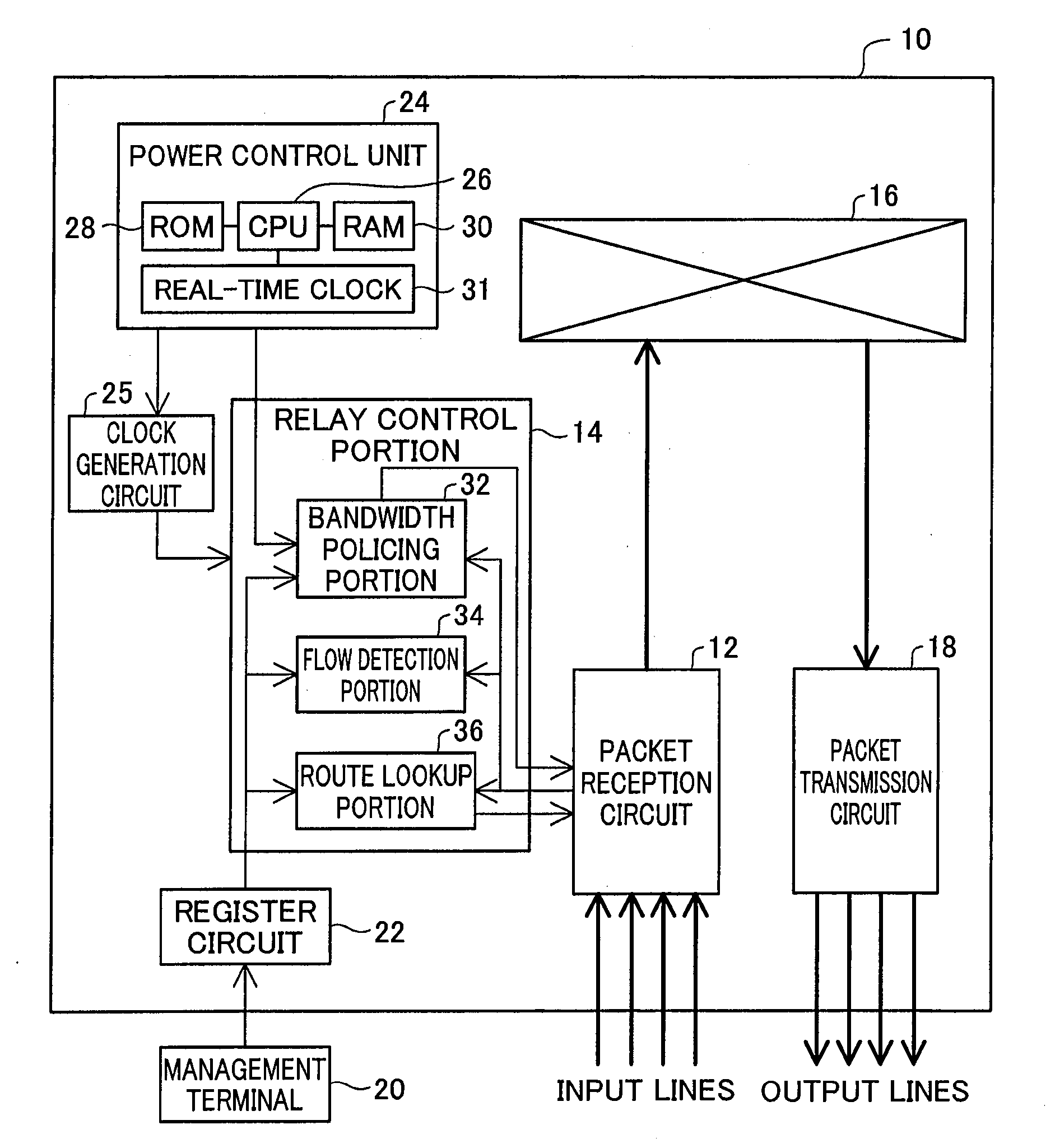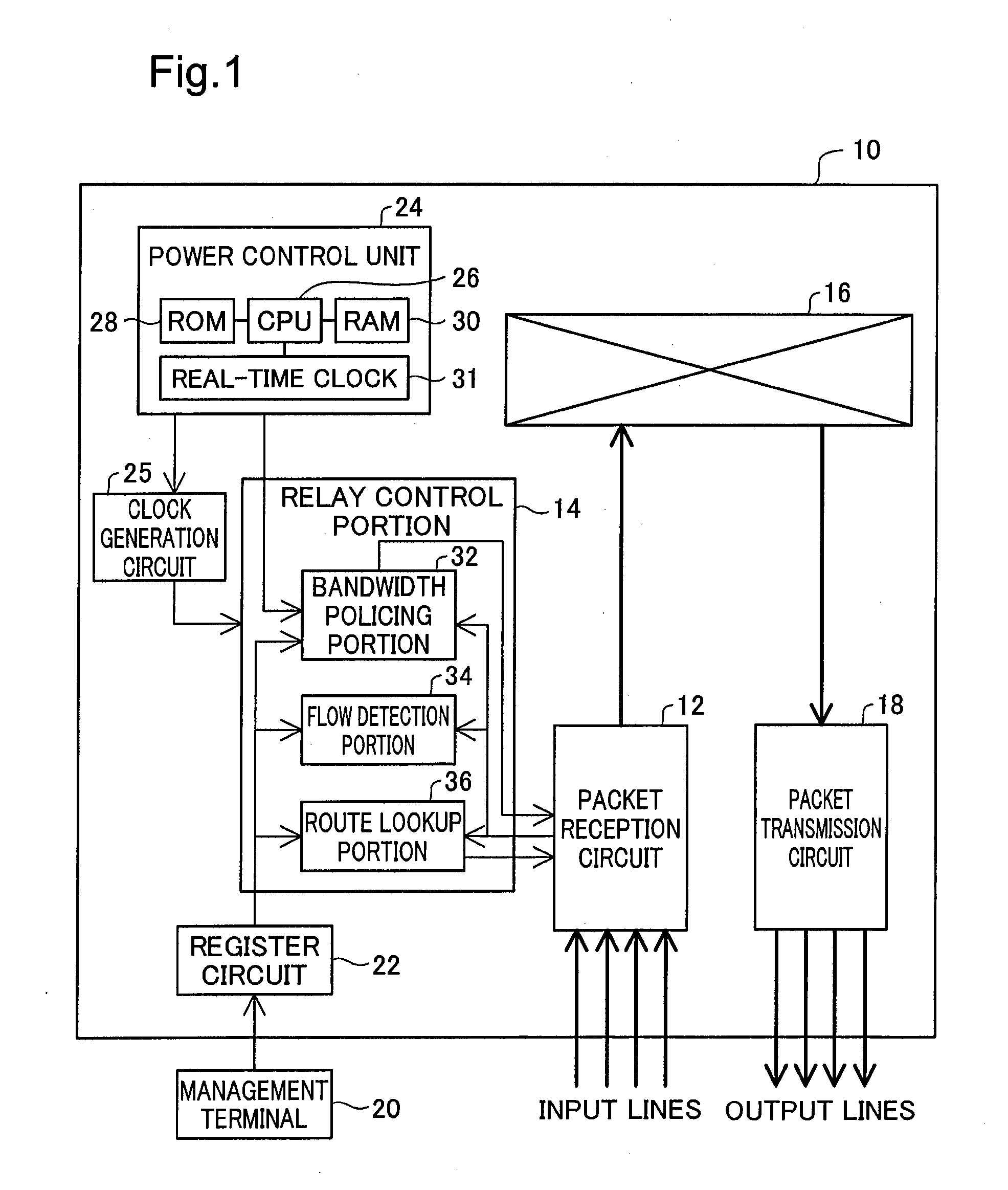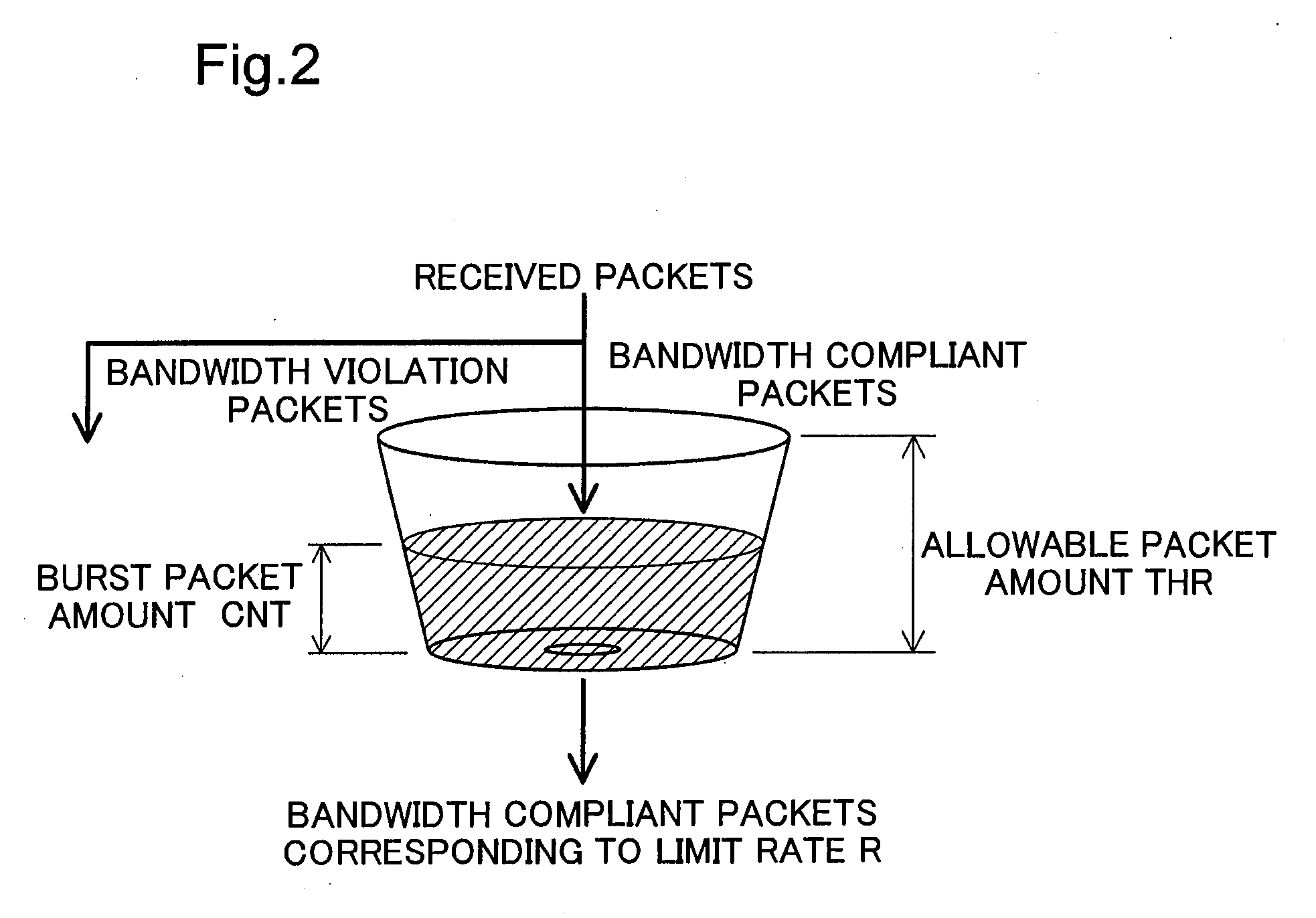Packet relay device
a packet relay and packet technology, applied in the direction of generating/distributing signals, frequency-division multiplexing, data switching networks, etc., can solve the problems of bandwidth violation, packet relay device power consumption increase, packet relay device packet power consumption drop,
- Summary
- Abstract
- Description
- Claims
- Application Information
AI Technical Summary
Benefits of technology
Problems solved by technology
Method used
Image
Examples
embodiment 1
(C1) Modified Embodiment 1
[0109]In Embodiment 1 described above, if the power mode transitions to power saving mode, the bandwidth policing process will be carried out on all flows on the basis of the timer value output by the power saving timer 64. However, it would be possible to instead select the timer value to be used in the bandwidth policing process, on an individual flow basis.
[0110]Specifically, as depicted in FIG. 16, a category recording a flag for timer selection (hereinafter termed a “Timer Select flag”) is appended to each entry in the bandwidth policing table TBL. If this Timer Select flag is “0,” when transitioning to power saving mode, the bandwidth policing process for the flow in question will be carried out on the basis of the timer value that is output by the power saving timer. On the other hand, if this Timer Select flag is “1,” when transitioning to power saving mode, the bandwidth policing process for the flow in question will be carried out on the basis of ...
embodiment 2
(C2) Modified Embodiment 2
[0113]In Embodiment 1 and Embodiment 2 described above, two timer circuit systems are provided in order to avoid fluctuations in bandwidth when transitioning to power saving mode. However, it would be acceptable to instead provide the timer with the normal timer 62 only, and to prepare two types of bandwidth policing table, namely, a normal bandwidth policing table that records a normal limit rate R, and a power saving bandwidth policing table that records a power saving limit rate R that is double the normal one. By preparing two tables in this way and selecting the table to be used according to the power mode, it will be possible to maintain constant bandwidth comparably to Embodiment 1 and Embodiment 2 described previously. FIG. 18 depicts an exemplary configuration of a bandwidth policing portion furnished with both a normal bandwidth policing table and a power saving bandwidth policing table.
embodiment 3
(C3) Modified Embodiment 3
[0114]In Embodiment 1 described above, in Step S18 (see FIG. 7) of the bandwidth policing process taking place immediately after the power mode has been switched from normal mode to power saving mode, there may be carried out a process to double the value of the last reception timer value TLST. By so doing, timer values before and after mode switching can be adjusted on the same time axis, making it possible to correctly calculate elapsed time ΔT since the previous packet reception. As a result, it will be possible to prevent fluctuations in bandwidth from occurring at the instant of mode switching. For similar reasons, in Embodiment 2 it would be acceptable in Step S302 (see FIG. 15) of the bandwidth policing process taking place immediately after the power mode has been switched from normal mode to power saving mode to carry out a process to double the last reception timer value TLSTb and the delay timer value TD at that time only.
PUM
 Login to View More
Login to View More Abstract
Description
Claims
Application Information
 Login to View More
Login to View More - R&D
- Intellectual Property
- Life Sciences
- Materials
- Tech Scout
- Unparalleled Data Quality
- Higher Quality Content
- 60% Fewer Hallucinations
Browse by: Latest US Patents, China's latest patents, Technical Efficacy Thesaurus, Application Domain, Technology Topic, Popular Technical Reports.
© 2025 PatSnap. All rights reserved.Legal|Privacy policy|Modern Slavery Act Transparency Statement|Sitemap|About US| Contact US: help@patsnap.com



